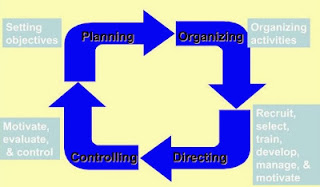Integrated Marketing Communications:
Integrated marketing communications (IMC) is an approach to brand communications where the different modes work together to create a seamless experience for the customer and are presented with a similar tone and style that reinforces the brand’s core message. Its goal is to make all aspects of marketing communication such as advertising, sales promotion, public relations direct marketing, online communications and social media work together as a unified force, rather than permitting each to work in isolation, which maximizes their cost effectiveness.
IMC is becoming more significant in marketing practice because of the reduced cost effectiveness of mass media and media fragmentation. As consumers spend more time online and on mobile devices all exposures of the brand need to tie together so they are more likely to be remembered.
Increasingly the strategies of brands cannot be understood by looking solely at their advertising. Instead they can be understood by seeing how all aspects of their communications ecosystem work together and in particular how communications are personalized for each customer and react in real time, as in a conversation.
How IMC helps:
1. It can create competitive advantage, boost sales and profits, while saving money, time and stress.
2. IMC wraps communications around customers and helps them move through the various stages of the buying process. The organisation simultaneously consolidates its image, develops a dialogue and nurtures its relationship with customers.
3. This 'Relationship Marketing' cements a bond of loyalty with customers which can protect them from the inevitable onslaught of competition. The ability to keep a customer for life is a powerful competitive advantage.
4. IMC also increases profits through increased effectiveness
5. Carefully linked messages also help buyers by giving timely reminders, updated information and special offers which, when presented in a planned sequence, help them move comfortably through the stages of their buying process
6. Finally, IMC saves money as it eliminates duplication in areas such as graphics and photography since they can be shared and used in say, advertising, exhibitions and sales literature.
7. IMC also makes messages more consistent and therefore more credible. This reduces risk in the mind of the buyer which, in turn, shortens the search process and helps to dictate the outcome of brand comparisons.
Above the line (ATL), below the line (BTL), in organizational business and marketing communications, are advertising techniques, or different strategies companies use to sell their products.
In a nutshell, while ATL communications use media that are broadcast and published to mass audiences, BTL communications use media that are more niche focused. While both ATL and BTL communications can be used to either build brand awareness or drive sales through specific offers (promotions), it is BTL communication that gives the marketer the ability to tailor their messaging in a more personal manner to the audience
ATL(Above The Line) Promotion:
ATL is a type of advertising through media such as television, cinema, radio, print, and Out-of-home to promote brands or convey a specific offer. This type of communication is conventional in its nature and is considered impersonal to customers. It differs from BTL advertising, which uses unconventional brand-building and promotional strategies, such as direct mail, sales promotions, flyers, point-of-sale, telemarketing and printed media (for example brochures) – and usually involves no motion graphics. It is much more effective than when the target group is very large and difficult to define.
BTL (Below The Line) Promotion:
BTL sales promotion is an immediate or delayed incentive to purchase, expressed in cash or in kind, and having short duration. It is efficient and cost-effective for targeting a limited and specific group. It uses less conventional methods than the usual ATL channels of advertising, typically focusing on direct means of communication, most commonly direct mail and e-mail, often using highly targeted lists of names to maximize response rates. BTL services may include those for which a fee is agreed upon and charged up front.
BTL is a common technique used for "touch and feel" products (consumer items where the customer will rely on immediate information rather than previously researched items). BTL techniques ensures recall of the brand while at the same time highlighting the features of the product.
Another BTL technique involves sales personnel deployed at retail stores near targeted products. This technique may be used to generate trials of newly launched products. It helps marketers establish one-to-one relationship with consumers while mass promotions, by definition, make it difficult to gauge consumer-response, except at the time of sales. Examples include tele-marketing, road shows, promotions, in- shop and shop-front activities, display units.
Lux soaps typically uses ATL promotions.



















.jpg)